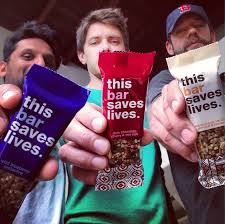Government Grants
Business Grants
Home Owner Programs
Federal Programs
About Us
Willamette Valley Prairie Pollinator Studies
Studies may include additional inventory at Fern Ridge, initial inventory at Valley fringe prairies at Dorena Lake, and other sites throughout the region; analysis of pollinator networks their variability within and between seasons, among sites, and among management regimes; pollen identification and
tracking on the landscape; comparisons of pollinator relations in remnant and restored rare plant sites; and the response of pollinator communities and networks to climate variability and habitat management activities such as prescribed fire and herbicide application.
Examination of plant response to pollinator communities may include in-depth examination of pollen limitation of conservation dependent species such as Willamette daisy, Kincaid’s lupine, and golden paintbrush as well as native prairie matrix species.
There is potential to support experiments using nursery-cultivated native plants or targeted habitat manipulation.
Specimen identification may be supported with DNA bar-coding, and pollinator effectiveness studies may be initiated, possibly using eDNA methods.
Specimens shall be accessioned into regional collections and published, with duplicate reference material provided to Corps biologists.
Objectives:
Objective 1:
Inventory pollinators on Corps of Engineers and other prairie sites by determining existing collections to species and designing and executing additional sampling.
Confirm identification with DNA bar-coding as needed.
Publish a Willamette Valley-Puget Trough prairie pollinator fauna in collaboration with regional collection such as the Oregon State Arthropod Collection.
Describe and quantitatively analyze variation in inventoried communities across space and time.
Objective 2:
Determine pollinator relationships of Erigeron decumbens and other plant species on Corps of Engineers prairies, nearby restoration sites, and other remnant populations.
What are the primary pollinators of rare prairie plants? What proportions of rare and other species’ pollen do they carry? What other plant species do pollinators depend on during rare plant flowering periods and before and after the season? Constructing pollinator networks and identifying and tracking pollen loads may be necessary to accomplish this objective.
Objective 3:
Pursue additional research questions relevant to other plant species and sites.
For example, how do prairie plant/pollinator communities vary in space and time? How do they respond to prescribed fire and other management techniques? How do they respond to unusual weather extremes, and how do these responses relate to expectations of climate change in these systems? Can rare plant population growth be improved by habitat manipulations aimed at pollinators? How do pollinator networks at Corps rare plant sites compare to those in other jurisdictions? How do pollinator communities relate to common measures of prairie health? Can reproductive contributions of individual pollinator species and single pollinator visits be quantified?
tracking on the landscape; comparisons of pollinator relations in remnant and restored rare plant sites; and the response of pollinator communities and networks to climate variability and habitat management activities such as prescribed fire and herbicide application.
Examination of plant response to pollinator communities may include in-depth examination of pollen limitation of conservation dependent species such as Willamette daisy, Kincaid’s lupine, and golden paintbrush as well as native prairie matrix species.
There is potential to support experiments using nursery-cultivated native plants or targeted habitat manipulation.
Specimen identification may be supported with DNA bar-coding, and pollinator effectiveness studies may be initiated, possibly using eDNA methods.
Specimens shall be accessioned into regional collections and published, with duplicate reference material provided to Corps biologists.
Objectives:
Objective 1:
Inventory pollinators on Corps of Engineers and other prairie sites by determining existing collections to species and designing and executing additional sampling.
Confirm identification with DNA bar-coding as needed.
Publish a Willamette Valley-Puget Trough prairie pollinator fauna in collaboration with regional collection such as the Oregon State Arthropod Collection.
Describe and quantitatively analyze variation in inventoried communities across space and time.
Objective 2:
Determine pollinator relationships of Erigeron decumbens and other plant species on Corps of Engineers prairies, nearby restoration sites, and other remnant populations.
What are the primary pollinators of rare prairie plants? What proportions of rare and other species’ pollen do they carry? What other plant species do pollinators depend on during rare plant flowering periods and before and after the season? Constructing pollinator networks and identifying and tracking pollen loads may be necessary to accomplish this objective.
Objective 3:
Pursue additional research questions relevant to other plant species and sites.
For example, how do prairie plant/pollinator communities vary in space and time? How do they respond to prescribed fire and other management techniques? How do they respond to unusual weather extremes, and how do these responses relate to expectations of climate change in these systems? Can rare plant population growth be improved by habitat manipulations aimed at pollinators? How do pollinator networks at Corps rare plant sites compare to those in other jurisdictions? How do pollinator communities relate to common measures of prairie health? Can reproductive contributions of individual pollinator species and single pollinator visits be quantified?
Related Programs
Basic, Applied, and Advanced Research in Science and Engineering
Department Of Defense
Agency: Department of Defense
Office: Engineer Research and Development Center
Estimated Funding: $75,000
Office: Engineer Research and Development Center
Estimated Funding: $75,000
Who's Eligible
Obtain Full Opportunity Text:
http://www.grants.gov
Additional Information of Eligibility:
This opportunity is restricted to non-federal partners of the Pacific Northwest Cooperative Ecosystems Studies Unit (CESU).
Full Opportunity Web Address:
http://www.grants.gov
Contact:
Agency Email Description:
Traci K. Hoofman
Agency Email:
Date Posted:
2022-03-17
Application Due Date:
Archive Date:
2022-06-17
Social Entrepreneurship
Spotlight
A Bar That Saves Children’s Lives

Ryan Devlin, Todd Grinnell and Ravi Patel have traveled to Africa on a humanitarian trip a few years back, encountering children suffering from severe malnutrition get healthy through Plumpy’Nut®.

